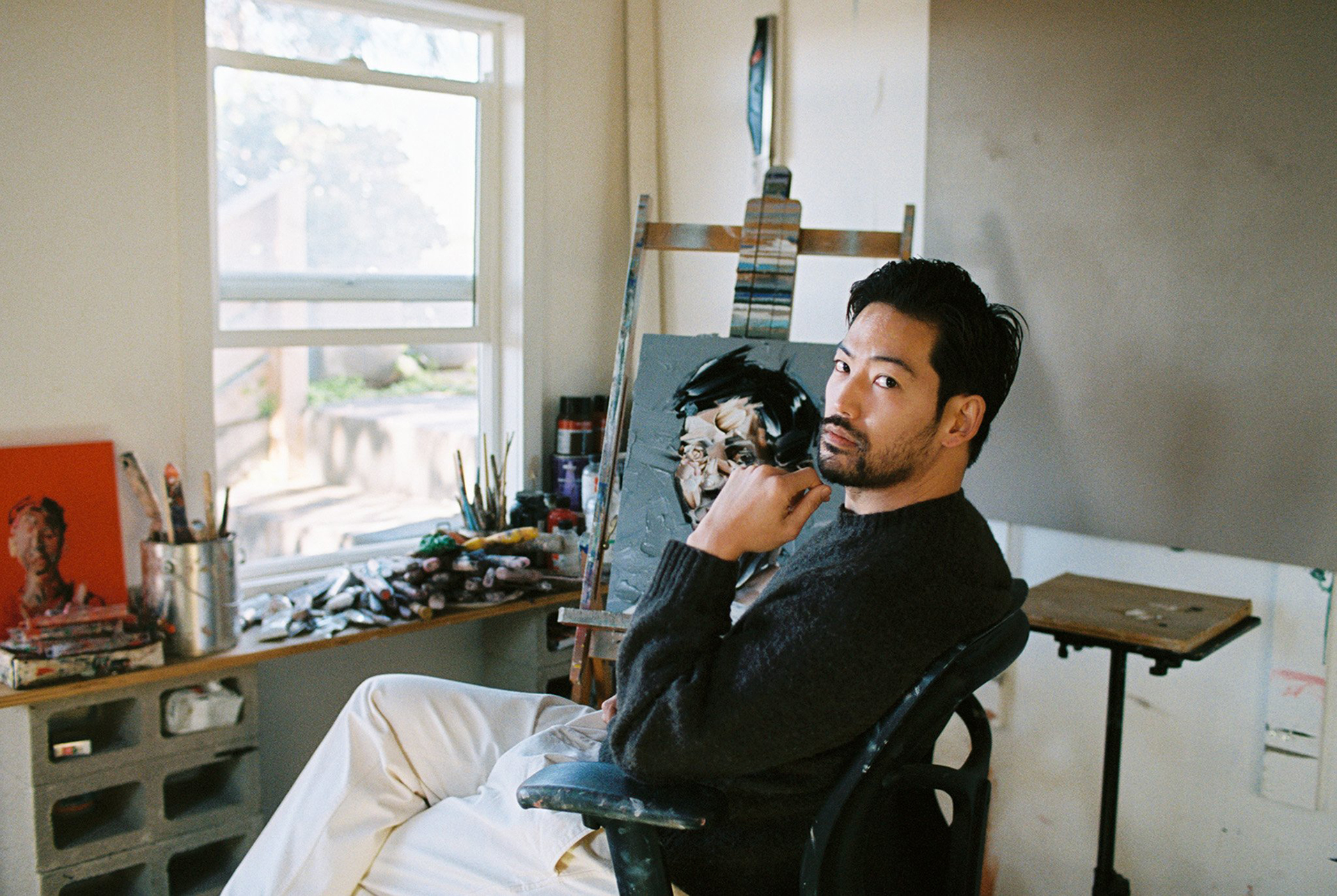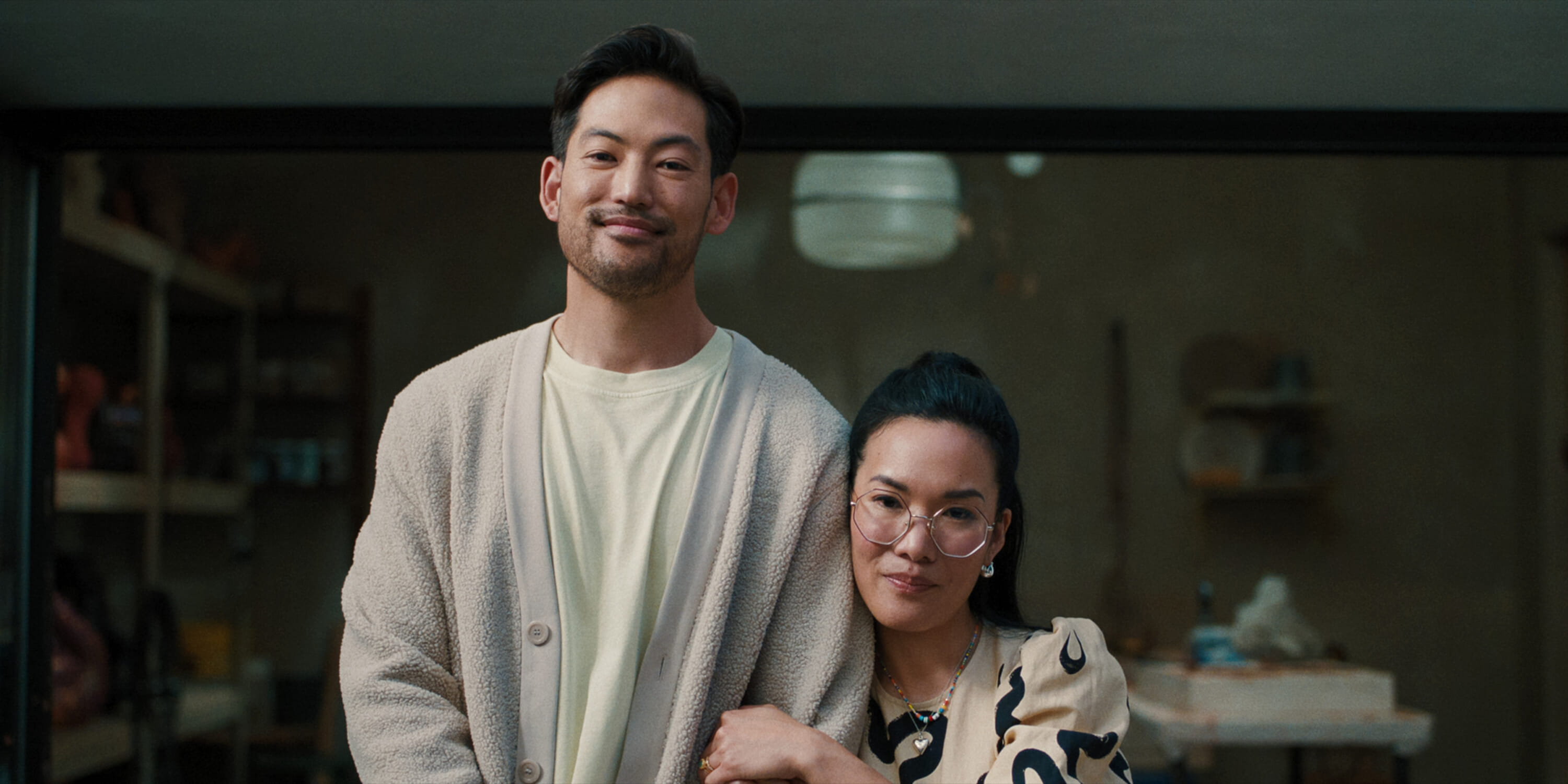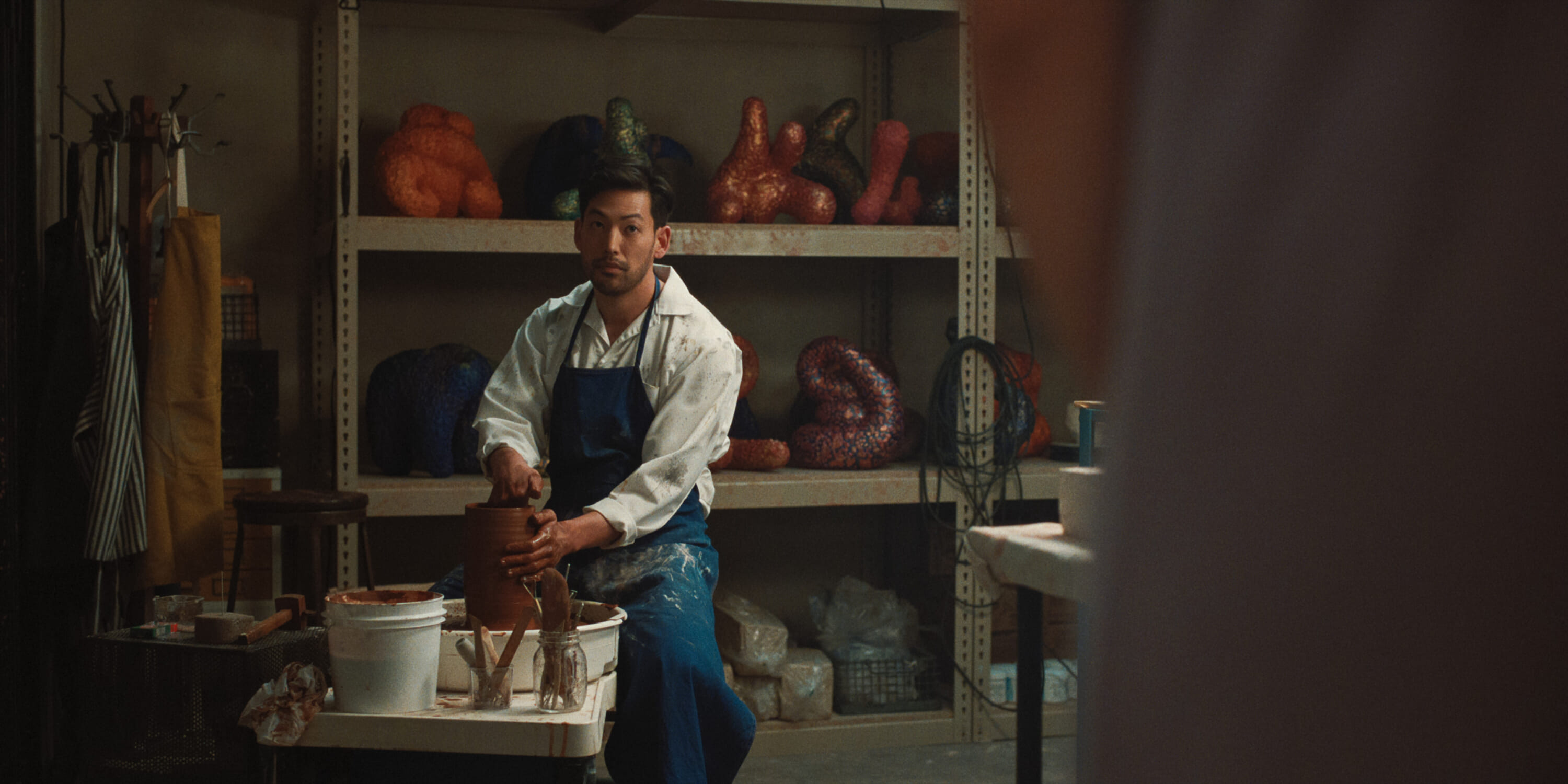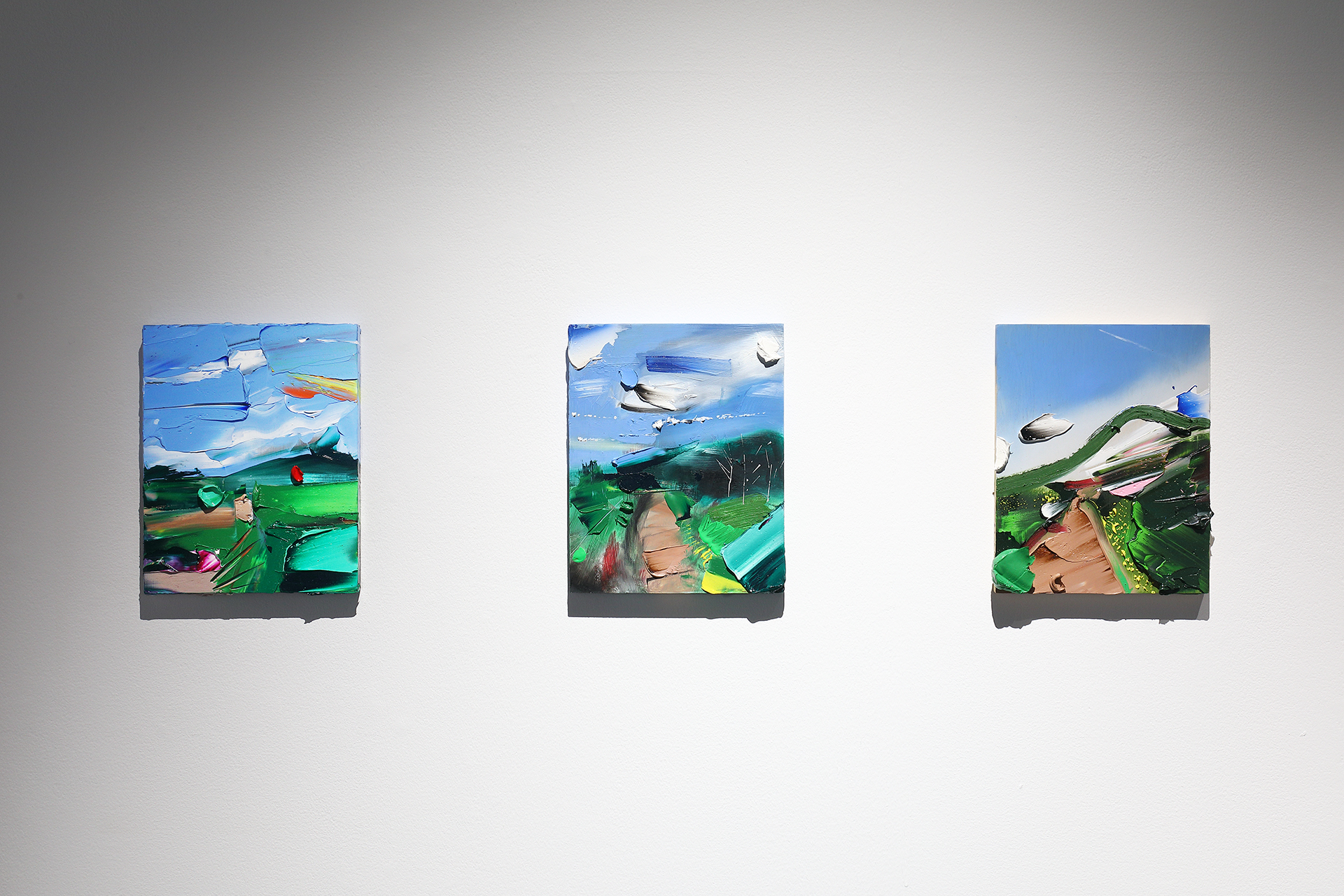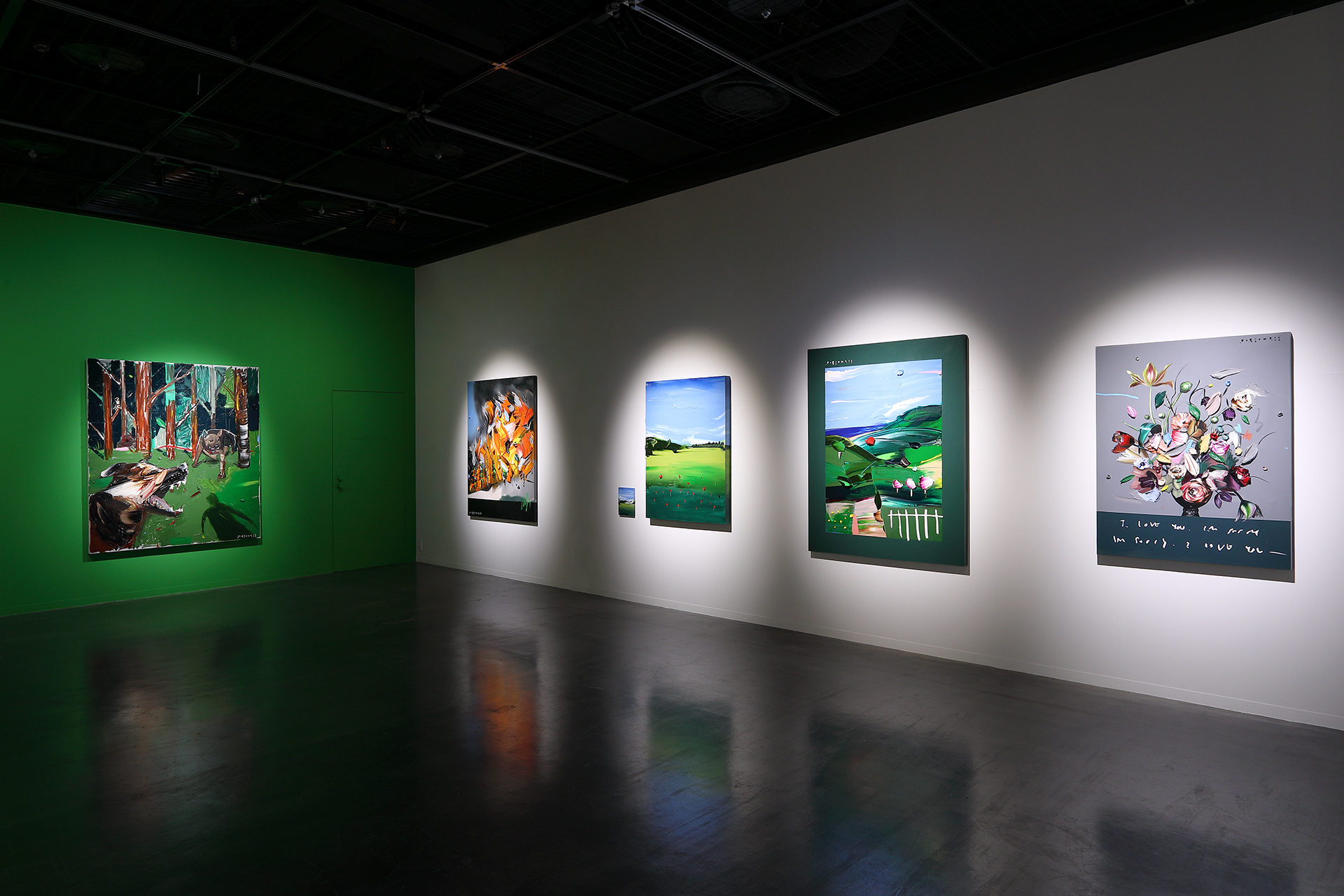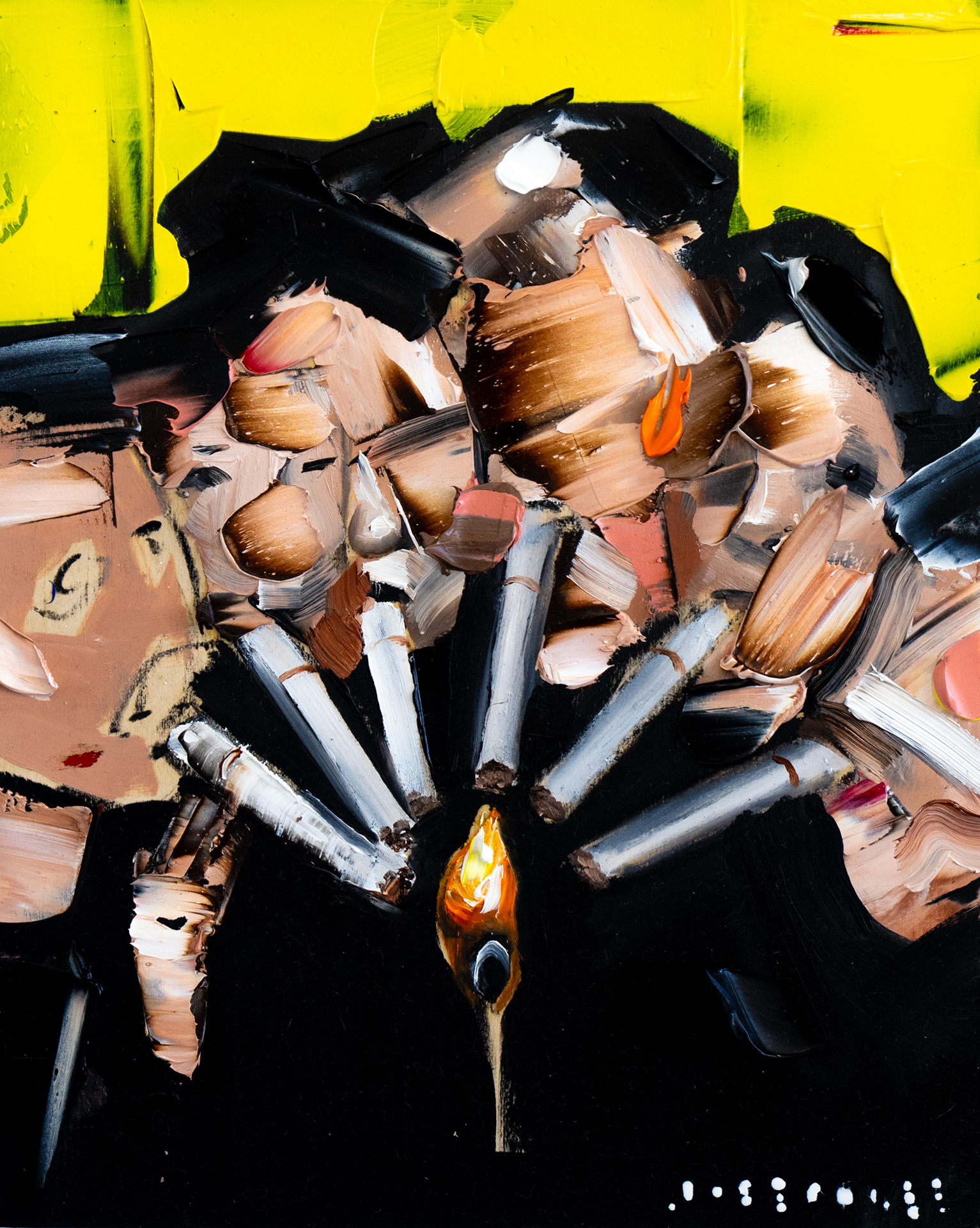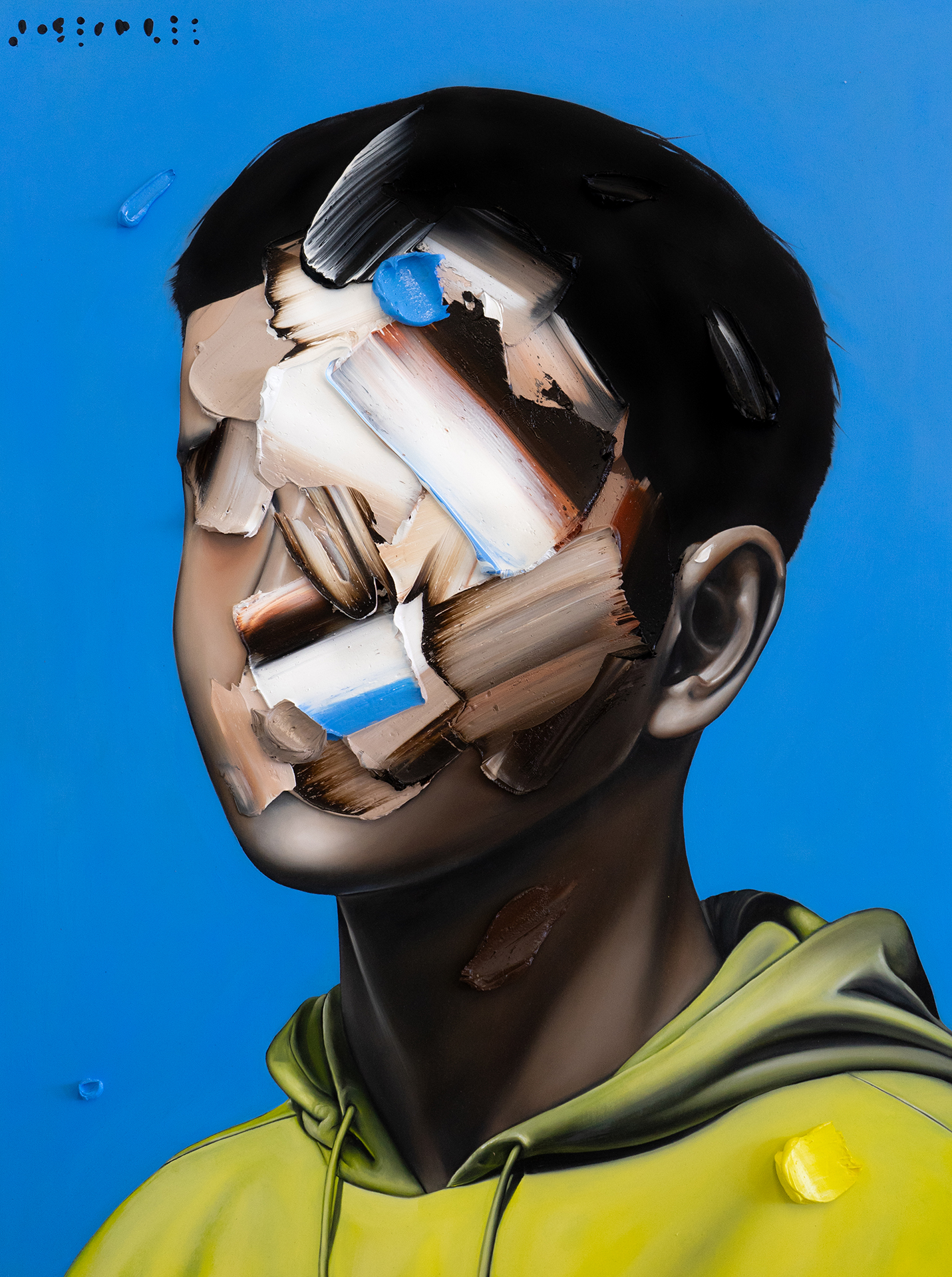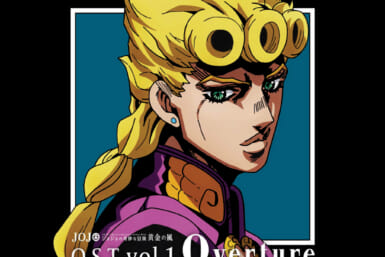Joseph Lee’s paintings reach out of themselves with thick, colorfully layered brushstrokes. White clouds bulge from the flat surface of the painting, poppies poke out of the grass. Lee’s use of the impasto technique brings us not only into the paintings but even closer to the artist’s studio. It makes us contemplate the process, see where the brush has been, read the artist’s movements.
This is why Lee’s works are best seen in a gallery to appreciate their sculpturesque nature. And for the first time in Japan, Tokyoites had the chance to do so this autumn at the Diesel Art Gallery in Shibuya. Co-curated by Jordan A.Y. Smith and Diesel’s in-house creative manager, Takamichi Mimuro, the “Pleasure in the Pathless Woods” exhibition (Sept. 23–Nov. 16) showcased Lee’s brand-new works.
The Emmy-nominated actor shot to widespread fame after the success of the Netflix series Beef, in which he starred alongside Ali Wong and Steven Yeun. Many who discovered him through the show, where he played George Nakai, a sculptor and the husband of main character Amy (Ali Wong), were pleasantly surprised to find out Lee is an artist in real life too. And a successful one in his own right well before Beef. In fact, Smith and Mimuro were working on the “Pleasure in the Pathless Woods” exhibition with Lee before the Netflix hit show. They recall they were surprised and excited when the show came out in April of this year.
Lee straddles two art forms and excels at both. It’s important, however, that one doesn’t overshadow the other. Talking to Smith about the exhibition opening, he tells us that although many attendees recognized Lee from Netflix and were excited about it, they were even more interested in his art.
TW had the chance to chat with Lee and Smith, and briefly with Mimuro, and we learned more about Lee’s artistic journey as well as how this Tokyo exhibition came to be.
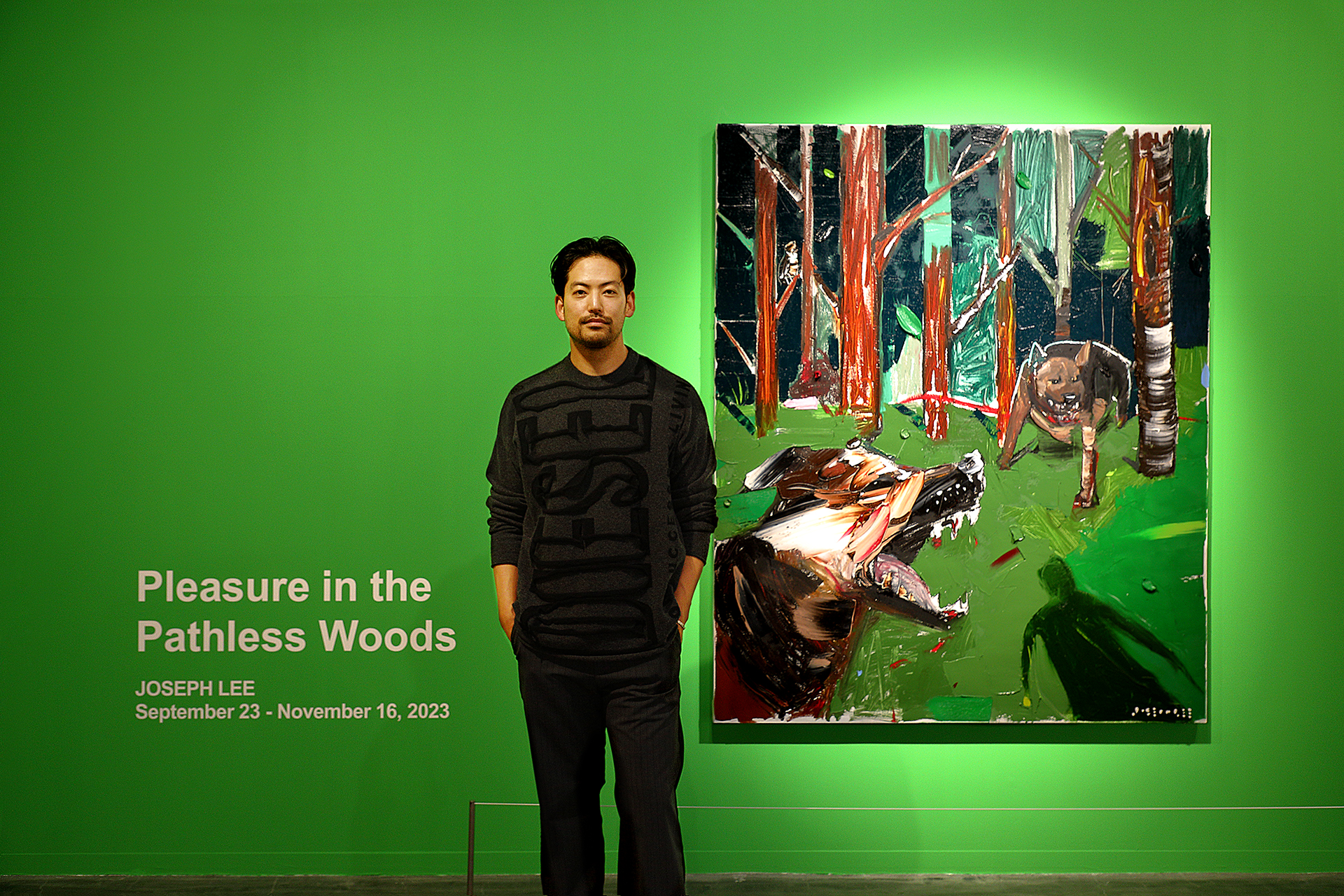
Photo by Miki Matsushima
Pleasure in the Pathless Woods
Lee’s faceless, featureless portraits painted with a flurry of thick impasto brushstrokes are his signature style. However, “Pleasure in the Pathless Woods” debuted the artist’s foray into landscapes. “This is my first show that I’ve kind of stepped away from doing what I typically do. I wanted to step into the unknown of what my paintings could be outside of what I’m comfortable with,” Lee says.
As for many of us, Lee’s rediscovery of nature happened due to the coronavirus pandemic. He went on more walks, then started bringing watercolors with him and sketching while out. “The impetus of the show really came from those mundane walks. And I started paying attention to little details that were around me … the blades of grass, the pigments in the sky,” Lee says. “And I had a humbling sense of how small I was, in the scope of all of this.” He goes on to refer to his local park in Los Angeles as his “church,” the place where he goes “for gratitude.”
Getting lost in Lee’s landscapes is a welcome relief from the bustling metropolis roaring just above the Diesel Art Gallery in the heart of Shibuya. Perhaps a new form of Romanticism, longing for nature seems to be in the zeitgeist. Lee even named the exhibition after a verse from “Childe Harold’s Pilgrimage” by the Romantic poet Lord Byron:
There is a pleasure in the pathless woods,
There is a rapture on the lonely shore,
There is society, where none intrudes,
By the deep Sea, and music in its roar:
I love not Man the less, but Nature more.
At the same time, Lee also touches upon the darker sides of nature. The Diesel Art Gallery exhibition starts with “Just Get Past the Dogs,” a large canvas with growling dogs in the middle of a forest. “I wanted to touch upon every kind of emotion within this entering the unknown, and anxiety is a huge part of that — fear is a huge part of that,” Lee says. “That painting is really my ode to perseverance.”
The artist and actor, despite his success, doesn’t shy away from sharing that he struggles with anxiety. He talks candidly about therapy and the help of his wife. “Also, you can’t be a good artist without being vulnerable,” he muses. “And if I want to take my work to another level, I need to know how to be honest with myself.”
“Pleasure in the Pathless Woods” was curated to feature Lee’s new work that explores nature while also incorporating portraits in his earlier style, though these were painted recently for the Diesel Art Gallery exhibition. “I would like to see it as a kind of transitionary show,” Lee says.
Identity Interrupted
Lee joins a long list of illustrious artists who have used impasto, such as Rembrandt and Van Gogh, but by his own admission, he is self-taught. Lee’s signature portrait work was born out of grief, studying the photographs of his late father whom he had rarely seen. “There’s no playbook on how you deal with tragedy or loss. I just remember being at that funeral and not knowing how to feel,” Lee remembers.
Sketching his father’s face for days turned out to be therapeutic and healing for him. After that, he just kept on going. “And somehow, now it’s become a career,” he says.
Lee also often explains how growing up as an only child to a single mother in Indiana where there weren’t many Asian people around has always made him study facial features more. He felt like he didn’t belong because of his Korean heritage. Spending time in Korea, however, led him to find out how American he is as well, and ultimately how complex identity is. It explains why his portraits are a featureless compilation of brushstrokes, with only a few unreliable hints of race or age.
“I’m not interested in just creating something that’s realistic; I’m really interested in getting beneath the surface of what’s happening,” Lee says. “
He paints the whole face first, and then he smears it. It’s powerful that he decides to paint over something that he already created,” Smith says later about Lee’s portrait works. “It’s kind of the undoing of easy identity.”
Two of the most poignant works in the Tokyo exhibition explore the relationship between Lee and his somewhat estranged father. In “All Korean Men Smoke From the Same Cigarette,” he shows a moment of nonverbal communication, a different kind of community. In “Same Differences,” he comes to the realization that “I love you” can be uttered in different words, such as “I’m sorry” — his father’s chosen way of communicating with his son.
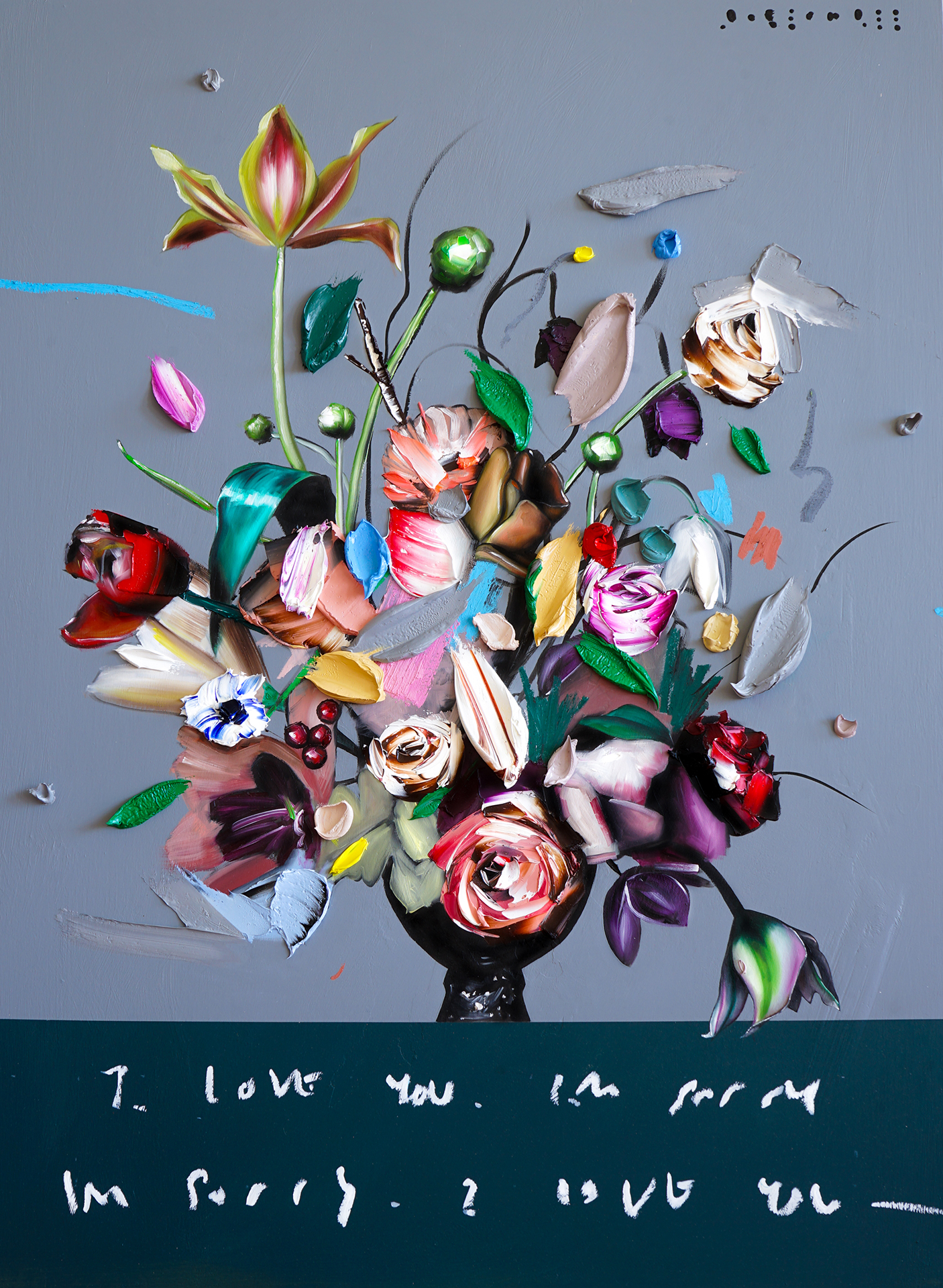
Same Differences
Pathless Travels
Lee shares with us that aside from his Tokyo exhibition, his secondary mission is to visit Naoshima, also known as Japan’s art island. He reveals that he’s a big fan of architect Tadao Ando, and he had heard from a friend about the island.
The artist expresses an appreciation of the Japanese aesthetic sensibility in general. “There’s a certain sense of minimalism and a control of ego that I deeply respect in a lot of Asian art,” he says.
“And as much as this trip has been about exhibiting and showing my work, I also just wanted to spend time with myself, and to come here and just be able to appreciate the work of others,” Lee says. “And then to kind of shut myself off, learn and absorb as much as I can, like a sponge.”
More Info
Find Lee’s art at josephleeart.com and on Instagram.
This article was originally published in the TW November-December 2023 issue

